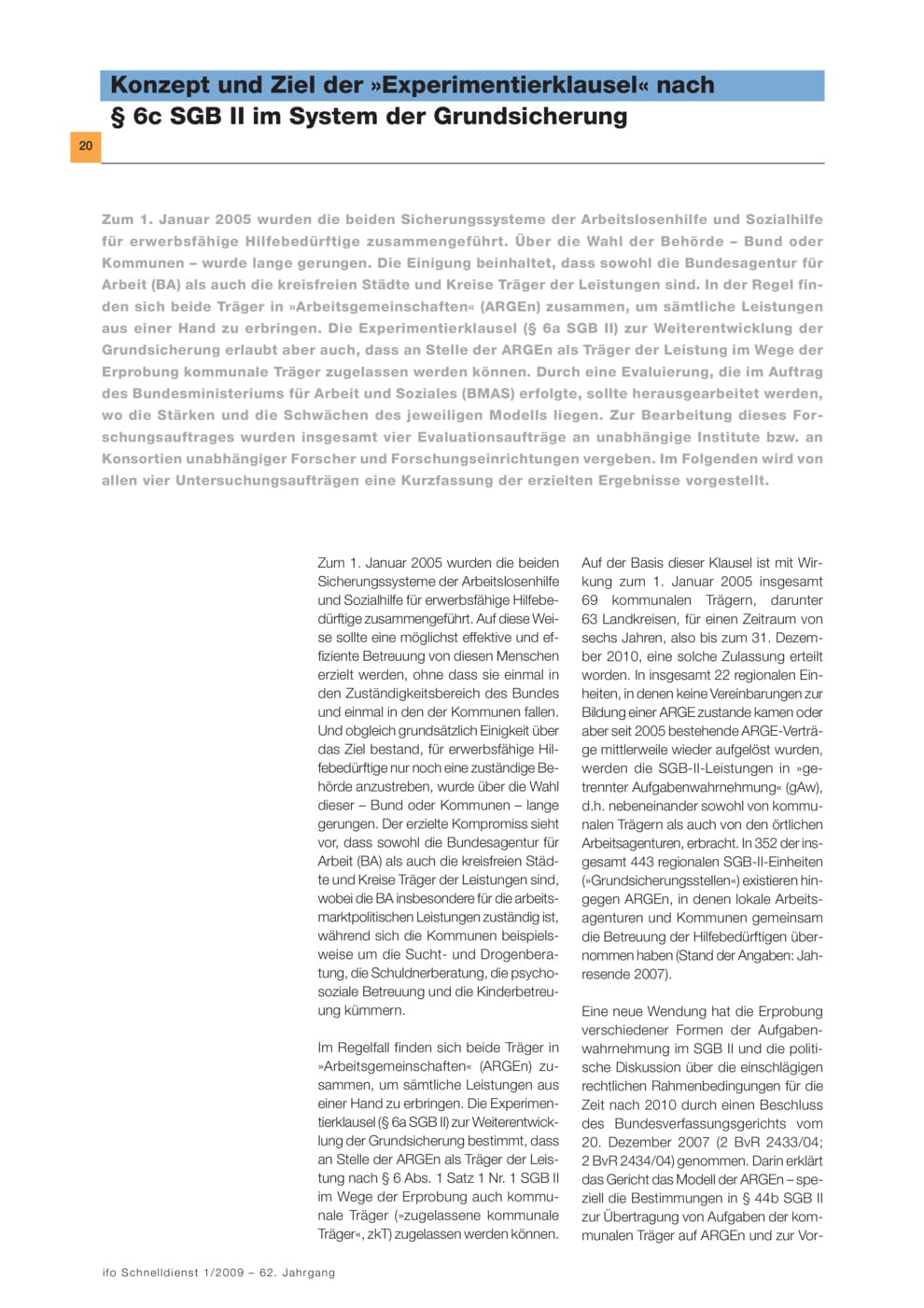The success of ARGEs (working groups) in reducing the number of ALG-II (unemployment compensation II) recipients Registered local providers increase employability
ifo Institut für Wirtschaftsforschung, München, 2009
ifo Schnelldienst, 2009, 62, Nr. 01, 20-21

The report claims that, relative to the model of exclusive communal providers, the extensive introduction of the ARGE model had resulted in a further reduction of the number of able-to-work needy people by about 84,000. Existing job openings were filled more consistently and the ARGEs' emphasis on the principle of making demands on the unemployed has strongly lowered the reservation wages of those in need of a job and those already employed, inducing firms to report more job openings. Exclusive communal providers raised the cost to the state by €3.1 billion due to the larger number of the able-bodied needy and the smaller number of employed. But the communal providers also have strengths: a more successful increase of long-term employability of needy persons. It has become evident that competition between the offices offering basic provision has resulted in quite different procedures in providing for the unemployed. The findings show that especially those provision models for jobseekers are helpful that are characterised by quick and intensive initial attention. ARGEs and communal providers, however, can still very much improve their provision for the able-bodied needy. These findings are part of a comparative evaluation of the ARGEs and registered communal providers in the basic provision of jobseekers ('Hartz IV'). The evaluation was commissioned by the Federal Government and done by several research institutes, including the Ifo Institute for Economic Research.